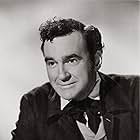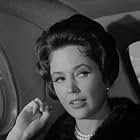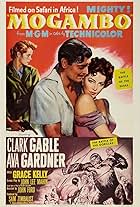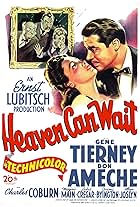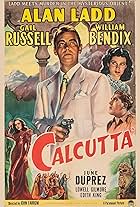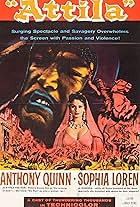With the Roman Empire divided, Attila the Hun hopes to conquer. In his way are a brave centurion, a beautiful princess...and Christianity.With the Roman Empire divided, Attila the Hun hopes to conquer. In his way are a brave centurion, a beautiful princess...and Christianity.With the Roman Empire divided, Attila the Hun hopes to conquer. In his way are a brave centurion, a beautiful princess...and Christianity.
Ludmilla Tchérina
- Princess Pulcheria
- (as Ludmilla Tcherina)
Robert Bice
- Chilothe
- (as Robo Bechi)
Storyline
Did you know
- TriviaFinal feature film of Moroni Olsen, who passed away about a month before its release.
- GoofsAll of the mounted troops have stirrups, which would not come into use in Europe for at least another four hundred years.
- Quotes
Pope Leo I: Rome is a Christian city, and the Temple of God!
- Crazy creditsAfter the list of actors at the start of the film it says: "AND Statesmen, Citizens, Soldiers of the Armies of the Roman Empire and the Hordes of Attila"
- ConnectionsReferenced in Pardon My Genie: Sister, Dear Sister (1972)
Featured review
Not one among the top notch epics that come to mind while encountering the genre, SIGN OF THE PAGAN by Douglas Sirk is an intriguing production and the one that occurs to offer a bit more than its typical concepts. Seemingly, it appears that there are two persons who make this film still mentioned on lists: its versatile director Douglas Sirk who became renowned in Hollywood and whose hallmarks are herein noticeable and the actor Jack Palance, the face that hardly results in negligence, who, actually, portrays the protagonist of the story. To analyze it in a more in-depth manner, one cannot consider the film from a merely spectacular standpoint. In that context we can name a dozen other, better, more colossal epics.
The historical period its story is set is a very interesting material for a screen production. Unlike some colossal Roman epics, SIGN OF THE PAGAN deals with an already 'Christianized' Roman empire (something Tony Keen critically points out in his review) or rather the divided empire into two of its 'wings': the west with the capital in Rome and emperor Valentinian (Walter Coy) and the east with the capital in Constantinople (perhaps one of the most spectacular cities in the history of mankind) and emperor Theodosius (George Dolenz).
Yes, it is the 5th century, the proud Roman eagles have already been replaced by the humble Cross (reference to Walter Pidgeon's prologue to 1951 QUO VADIS) but the enemy is approaching: it is the king of the Huns, Attila, the barbaric leader who has been granted many portrayals in both opera and film (just to name Anthony Quinn who portrayed the figure in another 1950s epic). Here, it is JACK PALANCE. Although it is not one of the most famous portrayals, this performance deserves credit.
Hailed by Gregor Torinus as depicting 'Attila's humanity' and 'sweeping portrayal of a crazed warrior with modern ailments' (Dennis Shwartz, 2007), Jack Palance is the highlight of the movie. From the good rapport with the director, he is, indeed, not an absolutely crazed savage driven by blood-thirst and slaughter (there are exceptions to this rule) but a man who is able to display certain godly fear from the depths of his nature. It is best resembled in the scene (a historic moment) of the meeting with a historically eminent figure, Pope St Leo I the Great (the first Successor of Peter who was, actually, the first to carry the title of both the Bishop of Rome and POPE) here played by Moroni Olsen. Gleaming with mysterious light and quite accurate historically, the scene does not only aim at portraying the superior power of will and faith within Leo but also Attila's readiness to cease the weapons and accept peace. The fact that he is a sophisticated character and has those 'modern ailments' (Schwartz) may also be observed in his fear of signs, esp. when lightning kills his seer in a fictitious fantasized scene and many consultations with the Astrologer, his sorcerer (Eduard Franz). Credit to Mr Palance! And the director, DOUGLAS SIRK?
We do not recognize him in the 'cheap spectacle' (Schwartz), in 'complete re-arrangement of chronology' nor 'oddity for a Hollywood Roman epic' (Keen) because, honestly, Mr Sirk proves to feel rather at odds with the genre. Douglas Sirk's style evokes at the role of women herein depicted. We actually encounter three women here: Cubra (Rita Gam), Attila's daughter, Ildico (Allison Hayes), her lady in waiting and Princess Pulcheria (Ludmila Tcherina). Let me skip the historical inaccuracy in this (particularly the princess), they all supply us with clear overtones of, let me call it in modern terms, 'emancipation.' While still pagan women are ruled by the ever present desire of independence (which is not a right word in the historical context), Pulcheria's free spirit is inspired by Virgin Mary. In one scene, we see her worship the Mother of God at one of the icons in Constantinople (it is not, as some would say, a Catholic perspective but a very historical notion that Mary was an example for Christian women of the first centuries, even 'Augustas of Rome' the most notable being Saint Helen, the mother of emperor Constantin). Unfortunately, this point is not well developed, goes pale and remains the backdrop till the fatally banal finale when we, actually, mix the idea if it is the shadow of the cross or a woman who kills Attila. There is no mention of Honoria. The director's spirit can be found, however, in the love story of Marcian (Jeff Chandler), the centurion and future emperor of Rome and Pulcheria.
The HISTORICAL INACCURACIES are, indeed, multiplied. Beginning with its source where the screenwriter Barre Lyndon does not even consider the historical writings of Priscus, Procopius nor Jordanes but Oscar Brodney's story that leads to the mode of fantasy and fiction where important historical figures and the entire background gives way to all needs of cheap entertainment evoked in wrestling, 'proto-Xena' fighting, etc. There are some memorable scenes, like the aforementioned meeting with Pope Leo at Mincio near Mantua that does not echo the famous painting by Raphael nor depict the famous Christian legend but carries a certain visual impact. Another moment is Attila's entrance to the church where the cross and monks's psalm drive him away from the town. However, there is no single mention of officer Aetius, Council of Chalcedon which played a decisive role in the story. The confrontation of civilization vs barbarianism is also reduced to sheer Christianity vs paganism. Esp. in the Roman context, we know that this is not the case.
Nevertheless, in spite of all criticism about this movie that one may encounter, I would still recommend to see SIGN OF THE PAGAN for purely cinematic motives. Obviously, do not treat it as a history lesson where the shadow of the cross within the sign of sword occurs to be sheer mutilation and simplification. Something different than more famous epics.
The historical period its story is set is a very interesting material for a screen production. Unlike some colossal Roman epics, SIGN OF THE PAGAN deals with an already 'Christianized' Roman empire (something Tony Keen critically points out in his review) or rather the divided empire into two of its 'wings': the west with the capital in Rome and emperor Valentinian (Walter Coy) and the east with the capital in Constantinople (perhaps one of the most spectacular cities in the history of mankind) and emperor Theodosius (George Dolenz).
Yes, it is the 5th century, the proud Roman eagles have already been replaced by the humble Cross (reference to Walter Pidgeon's prologue to 1951 QUO VADIS) but the enemy is approaching: it is the king of the Huns, Attila, the barbaric leader who has been granted many portrayals in both opera and film (just to name Anthony Quinn who portrayed the figure in another 1950s epic). Here, it is JACK PALANCE. Although it is not one of the most famous portrayals, this performance deserves credit.
Hailed by Gregor Torinus as depicting 'Attila's humanity' and 'sweeping portrayal of a crazed warrior with modern ailments' (Dennis Shwartz, 2007), Jack Palance is the highlight of the movie. From the good rapport with the director, he is, indeed, not an absolutely crazed savage driven by blood-thirst and slaughter (there are exceptions to this rule) but a man who is able to display certain godly fear from the depths of his nature. It is best resembled in the scene (a historic moment) of the meeting with a historically eminent figure, Pope St Leo I the Great (the first Successor of Peter who was, actually, the first to carry the title of both the Bishop of Rome and POPE) here played by Moroni Olsen. Gleaming with mysterious light and quite accurate historically, the scene does not only aim at portraying the superior power of will and faith within Leo but also Attila's readiness to cease the weapons and accept peace. The fact that he is a sophisticated character and has those 'modern ailments' (Schwartz) may also be observed in his fear of signs, esp. when lightning kills his seer in a fictitious fantasized scene and many consultations with the Astrologer, his sorcerer (Eduard Franz). Credit to Mr Palance! And the director, DOUGLAS SIRK?
We do not recognize him in the 'cheap spectacle' (Schwartz), in 'complete re-arrangement of chronology' nor 'oddity for a Hollywood Roman epic' (Keen) because, honestly, Mr Sirk proves to feel rather at odds with the genre. Douglas Sirk's style evokes at the role of women herein depicted. We actually encounter three women here: Cubra (Rita Gam), Attila's daughter, Ildico (Allison Hayes), her lady in waiting and Princess Pulcheria (Ludmila Tcherina). Let me skip the historical inaccuracy in this (particularly the princess), they all supply us with clear overtones of, let me call it in modern terms, 'emancipation.' While still pagan women are ruled by the ever present desire of independence (which is not a right word in the historical context), Pulcheria's free spirit is inspired by Virgin Mary. In one scene, we see her worship the Mother of God at one of the icons in Constantinople (it is not, as some would say, a Catholic perspective but a very historical notion that Mary was an example for Christian women of the first centuries, even 'Augustas of Rome' the most notable being Saint Helen, the mother of emperor Constantin). Unfortunately, this point is not well developed, goes pale and remains the backdrop till the fatally banal finale when we, actually, mix the idea if it is the shadow of the cross or a woman who kills Attila. There is no mention of Honoria. The director's spirit can be found, however, in the love story of Marcian (Jeff Chandler), the centurion and future emperor of Rome and Pulcheria.
The HISTORICAL INACCURACIES are, indeed, multiplied. Beginning with its source where the screenwriter Barre Lyndon does not even consider the historical writings of Priscus, Procopius nor Jordanes but Oscar Brodney's story that leads to the mode of fantasy and fiction where important historical figures and the entire background gives way to all needs of cheap entertainment evoked in wrestling, 'proto-Xena' fighting, etc. There are some memorable scenes, like the aforementioned meeting with Pope Leo at Mincio near Mantua that does not echo the famous painting by Raphael nor depict the famous Christian legend but carries a certain visual impact. Another moment is Attila's entrance to the church where the cross and monks's psalm drive him away from the town. However, there is no single mention of officer Aetius, Council of Chalcedon which played a decisive role in the story. The confrontation of civilization vs barbarianism is also reduced to sheer Christianity vs paganism. Esp. in the Roman context, we know that this is not the case.
Nevertheless, in spite of all criticism about this movie that one may encounter, I would still recommend to see SIGN OF THE PAGAN for purely cinematic motives. Obviously, do not treat it as a history lesson where the shadow of the cross within the sign of sword occurs to be sheer mutilation and simplification. Something different than more famous epics.
- marcin_kukuczka
- Aug 3, 2013
- Permalink
- How long is Sign of the Pagan?Powered by Alexa
Details
- Release date
- Country of origin
- Language
- Also known as
- Attila, der Hunnenkönig
- Filming locations
- Production company
- See more company credits at IMDbPro
Box office
- Budget
- $1,300,000 (estimated)
- Runtime1 hour 32 minutes
Contribute to this page
Suggest an edit or add missing content














